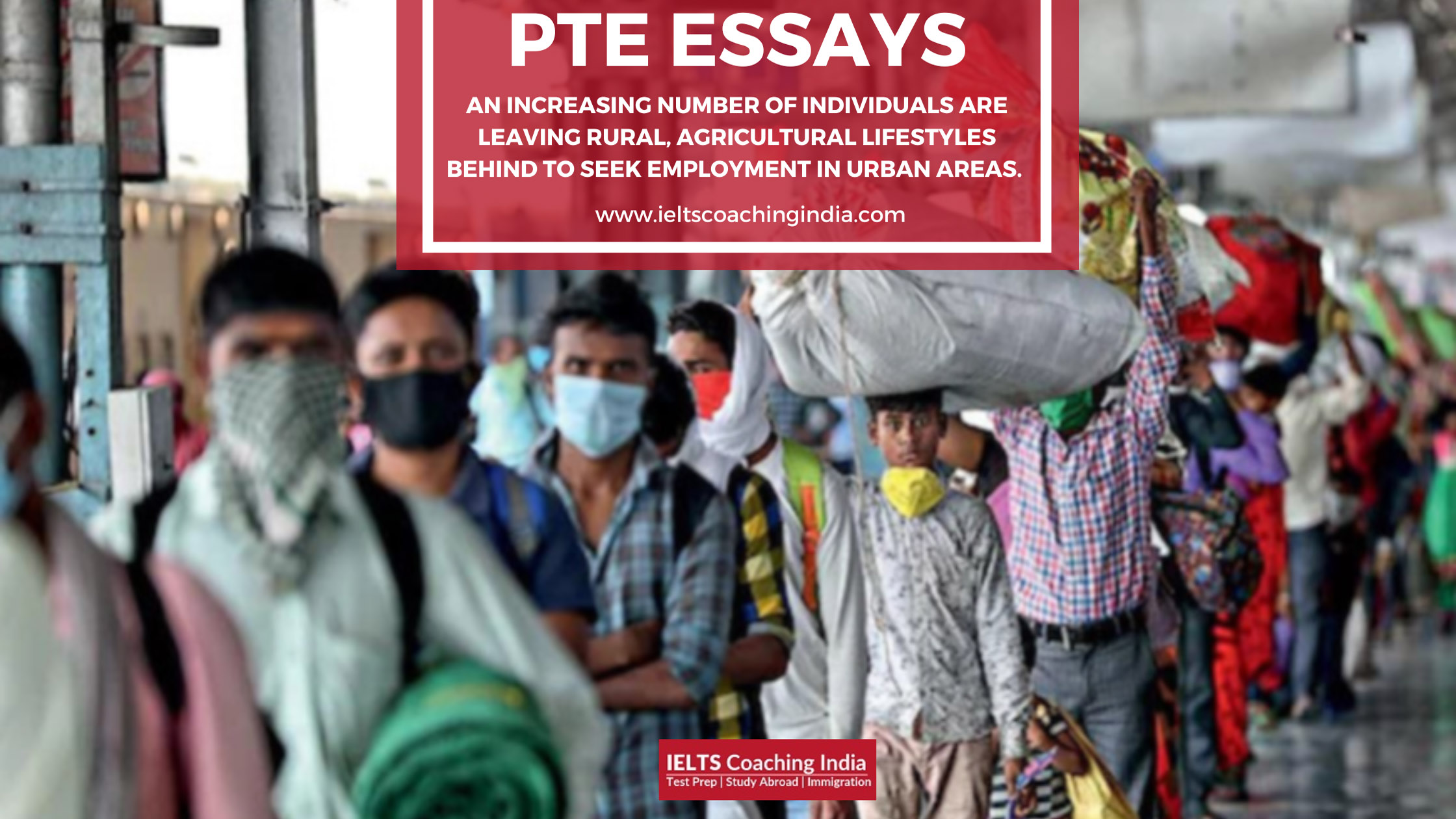Sample 1:
The migration of individuals from rural, agricultural areas to urban centers in search of employment is a growing global trend. While it offers economic opportunities, it also leads to significant challenges for both rural and urban areas.
One major outcome is the depopulation of rural regions, resulting in a decline in agricultural productivity. As people leave, the labor force in rural areas shrinks, leading to food shortages and neglected infrastructure, such as schools and healthcare facilities.
Conversely, urban areas face overcrowding, increased demand for housing, and strain on public services like transportation and healthcare. Rapid population growth can also lead to higher unemployment rates, as job creation may not keep pace with the influx of people. Additionally, urban sprawl often results in environmental degradation, including increased pollution and loss of green spaces.
To address these challenges, improving rural infrastructure and services is crucial to making rural life more attractive. Investments in healthcare, education, and transportation can help retain the rural population by offering better opportunities. Promoting sustainable agriculture through modern farming techniques and supporting agribusiness can also boost rural economies.
In urban areas, better urban planning and the development of affordable housing are essential. Expanding public transportation, improving waste management, and creating green spaces can help mitigate the negative impacts of urbanization. Additionally, cities should focus on creating diverse job opportunities that match the skills of rural migrants, helping them integrate into the urban workforce.
In cocnlcusion, balancing rural and urban development through targeted investments and planning can address the challenges posed by this migration trend.
Sample 2:
The trend of moving to metropolitan cities has increased in the last few decades. Most of the individuals like to choose the cities to find out the better career opportunities. There can be many results of this migration and this essay will discuss some ways to get a control over this trend.
To begin with, the increase of movement of people to urban areas would leave the small rural areas in the same developing state. The decrease in population would cause economic or business breakdowns in these regions. Apart from this, individuals would start forgetting about their roots. After moving to urban areas, they would start adopting their cultures and trends.
The coming generation would be totally disconnected from their cultures and ancient thoughts. Moreover, it would attract other people to go to big cities to search for jobs rather than trying to find out in their own areas. The agricultural towns would not have enough workers to take care of crops.
Although, there are some remedies that can be taken into account to slow down this trend. Firstly, the Government can start organizing different job fairs to help people to get a job in their towns. In case the area is not developed enough, authorities should give funds to different sectors such as educational, agriculture, health care and many more. Secondly, the organization of big companies near rural areas would be helpful for residents to get jobs nearby and by staying in touch with their towns. Other than this, doing remote jobs is the other way to live on motherlands and to go on the path of career planning.
To conclude, working and searching for employment in developed cities has been increasingly practiced by the individuals from villages or other small towns but this trend can be taken into control with the assistance of the Government or other local authorities.
Sample 3:
With rapid urbanization more people are migrating to cities in search of lucrative employment opportunities leaving behind traditional farming jobs in rural areas. This has resulted in overpopulation and congestion in cities and in my opinion this needs to be addressed by the government of states urgently.
In recent years, hoards of people from rural areas are shifting their base to cities in search of better income. This trend has resulted in overcrowding of cities with mounting pressure on all kinds of resources including housing. Prices of housing units are skyrocketing and the middle and lower strata of society are struggling to find affordable housing. Moreover, limited energy sources and fresh water reserves are not enough to cater to the ever rising population resulting in extreme shortage of electricity and water especially during peak summer season. In addition, air pollution is on the rise due to increased vehicular population and industrial units billowing harmful gases into the air.
To curb migration from rural areas towards cities, governments should come up with plans to improve the agricultural sector as well as other sectors. Most people move to cities in search of better incomes as often farming jobs do not ensure substantial income. Introducing modern farming methods and aid from government would go a long way in ensuring prosperity of those who are involved in farming jobs. Improvements in other sectors, such as heavy industries and other small scale industries, would ensure steady employment for people living in these areas, thus plugging migration. Further, improved infrastructure is another area where governments should focus as better housing, transport and other amenities often motivate people to move to cities.
In conclusion, while cities all over the world are expanding, it is not enough to accommodate the ever rising population migrating from adjoining underdeveloped areas. To curb this, government needs to ensure better facilities and more employment opportunities in such areas.






This web site is really a walk-through for all of the info you wanted about this and didn’t know who to ask. Glimpse here, and you’ll definitely discover it.
Howdy! Do you know if they make any plugins to assist with SEO?
I’m trying to get my blog to rank for some targeted keywords but
I’m not seeing very good gains. If you know of any please share.
Thank you!
Wow, awesome blog structure! How long have you ever been blogging for? you made blogging glance easy. The full glance of your web site is magnificent, as smartly as the content material!
Heya i?m for the first time here. I came across this board and I find It truly useful & it helped me out a lot. I hope to give something back and aid others like you helped me.